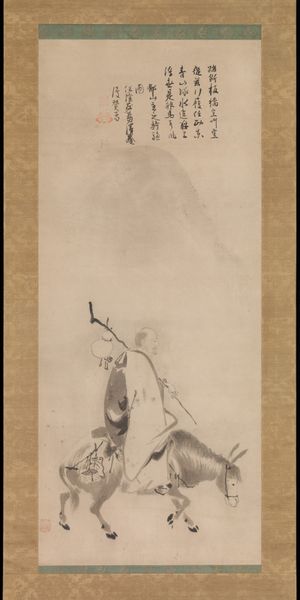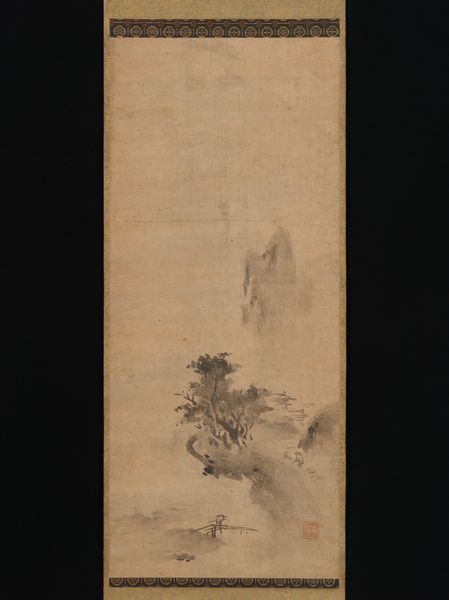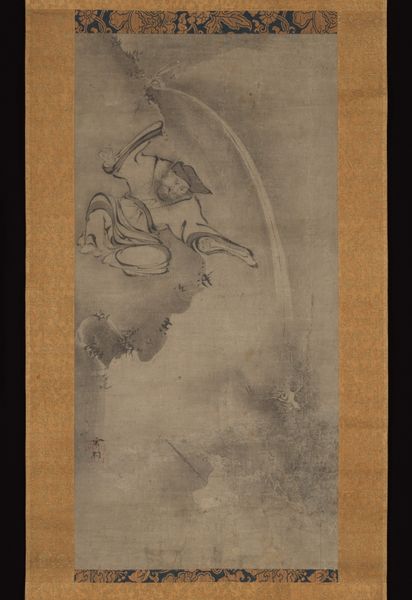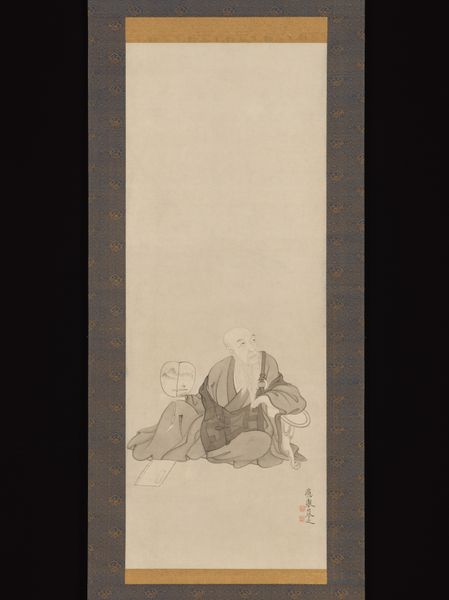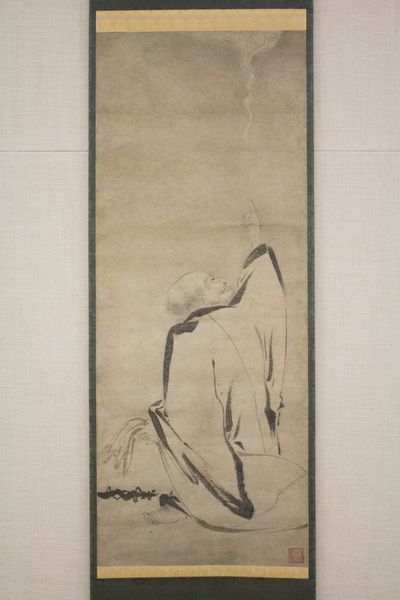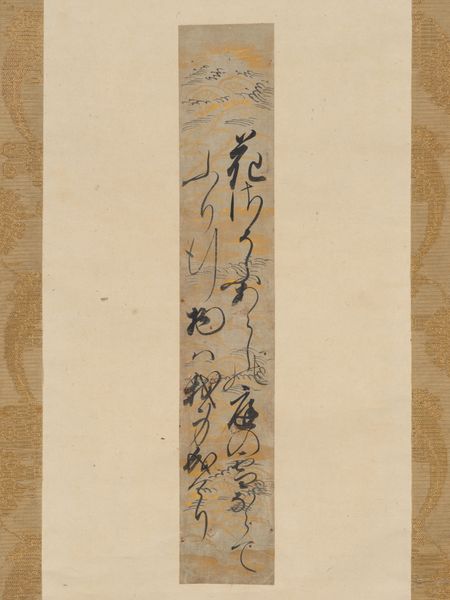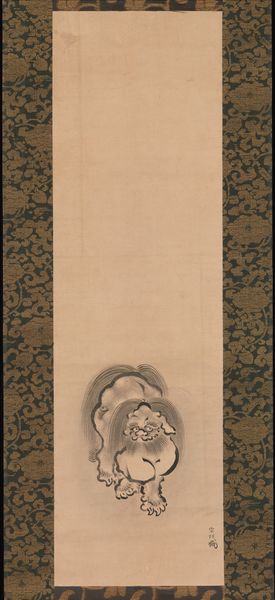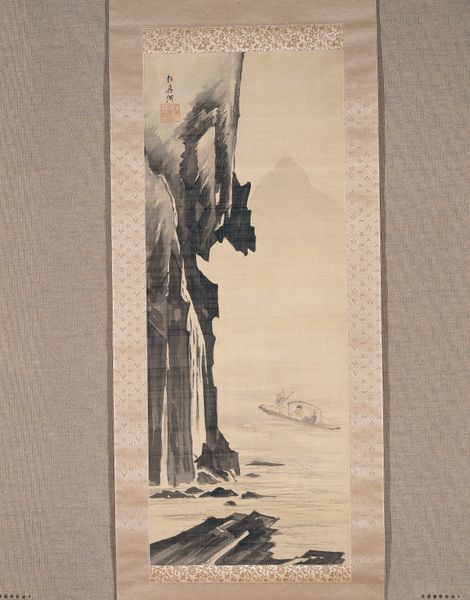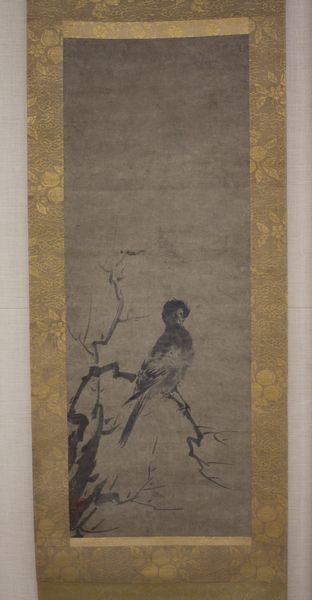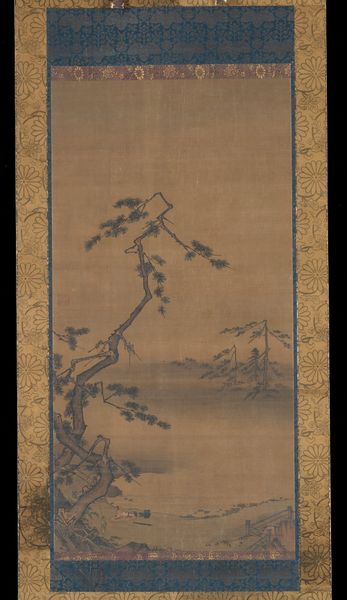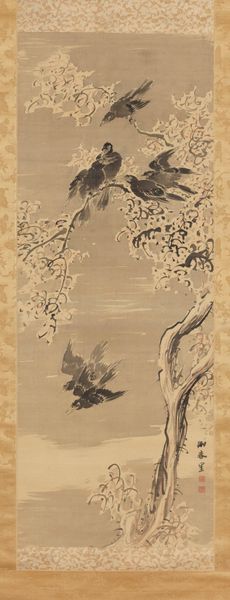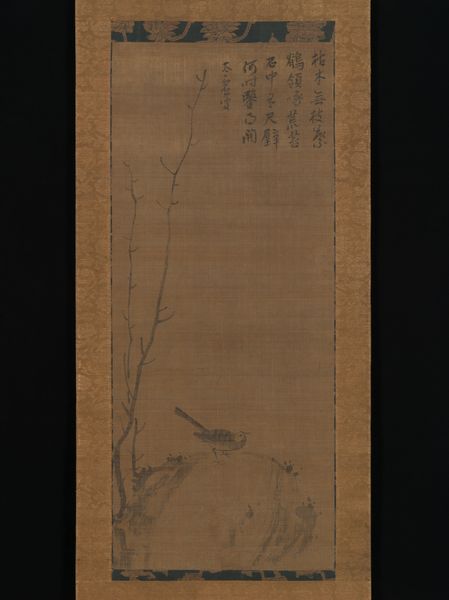
drawing, paper, ink
#
portrait
#
drawing
#
asian-art
#
landscape
#
paper
#
ink
#
line
Dimensions: Image: 42 1/2 × 18 11/16 in. (108 × 47.4 cm) Overall with mounting: 74 3/16 × 25 13/16 in. (188.5 × 65.5 cm)
Copyright: Public Domain
Editor: This is "Priest Xianzi" by Unkoku Tōgan, likely created sometime between 1547 and 1618. It's an ink drawing on paper, a hanging scroll piece actually, that feels so simple and contemplative to me. What stands out to you in this work? Curator: The power of suggestion, really. Note how few lines Tōgan uses, yet he conveys so much. Observe the sparse branches above – hinting at the broader landscape without fully rendering it. Consider, what do bare branches signify culturally? Editor: Hmmm, maybe a sort of… austerity? Or perhaps resilience, like weathering a storm? Curator: Exactly! And look at Xianzi’s gaze. It's directed towards what seems to be a blossoming flower. The artist juxtaposes the harshness of winter, those stark branches, with the promise of spring. What emotional weight does that add, do you think? Editor: Hope, definitely! Maybe also a sense of peace. The priest finds beauty even in a stark landscape. Curator: Precisely! And beyond just simple hope, it’s a cycle; death and rebirth coexisting, almost literally at the same height from each other, depicted within the same composition. A potent reminder, isn't it? And notice the positioning, with the left arm close, suggesting perhaps a deeper level of guarded awareness within his gaze. Editor: That's such a rich interpretation; I had just thought it was a nice drawing! I’m going to spend a lot more time looking at how artists use symbolic contrast in their work now. Curator: It’s about seeing the layers beneath the surface, that dialogue between what is explicitly depicted and what it suggests. That is what gives these images continued vitality through generations.
Comments
No comments
Be the first to comment and join the conversation on the ultimate creative platform.
